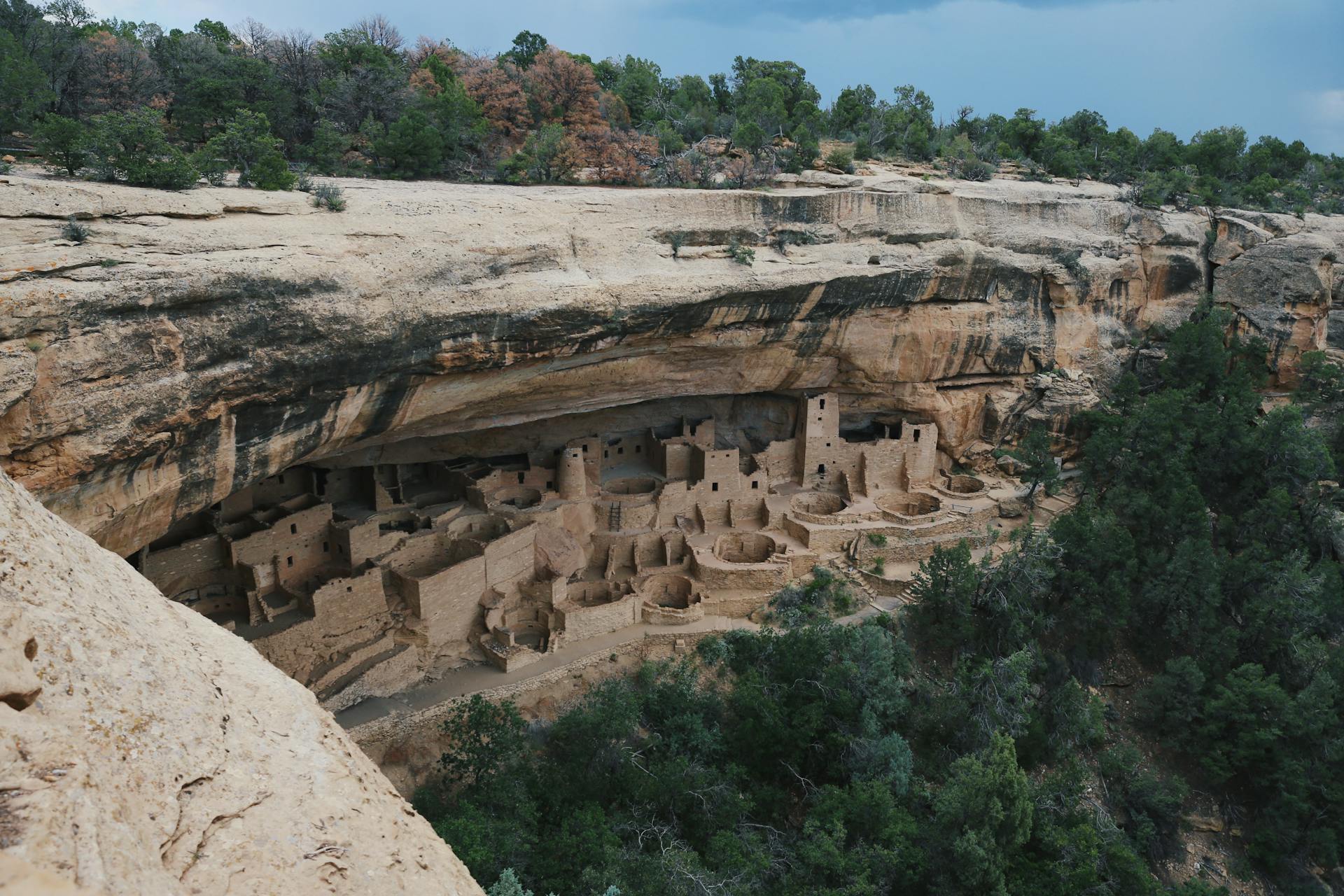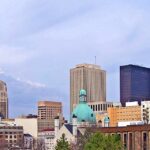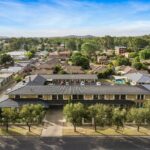Quick Bits:
Mesa Verde National Park stands as one of the most significant cultural and historical landmarks in the United States. Nestled in the southwest corner of Colorado, this park shelters the remnants of ancient cliff dwellings built by the Ancestral Puebloans. A UNESCO World Heritage Site since 1978, the park draws history buffs, archaeologists, hikers, and photographers alike. Its name translates to “green table,” inspired by the high mesas blanketed with juniper and pinyon pine.
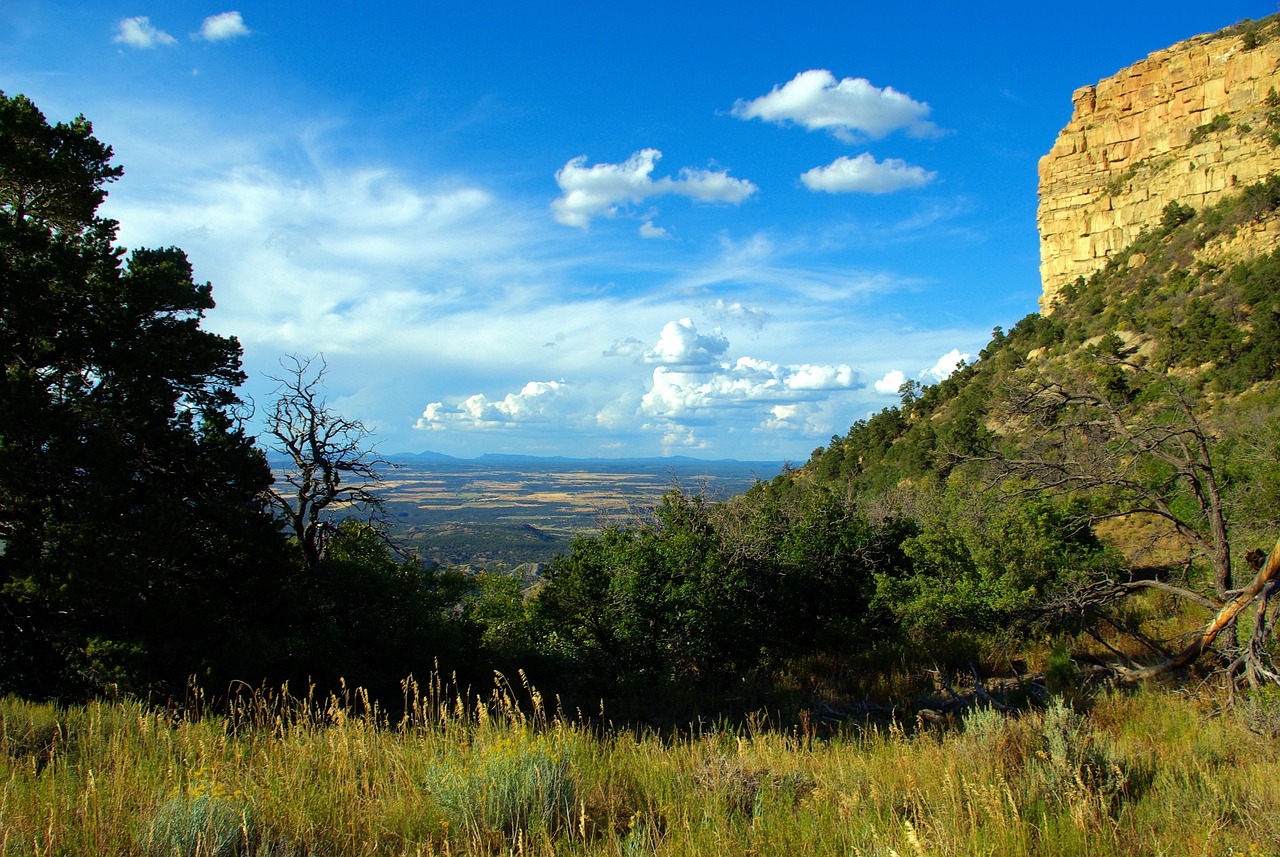
Image by: Mike Goad – Via Pixabay
Key Highlights
- Over 5,000 archaeological sites, including 600 cliff dwellings
-
Home to the iconic Cliff Palace, the largest cliff dwelling in North America
-
Declared a National Park in 1906 to preserve Native American heritage
-
Offers ranger-guided and self-guided tours through ancient dwellings
-
52,000 acres of preserved land with abundant flora and fauna.
General Information
Mesa Verde National Park preserves more than history. It represents a deep connection between landscape and community. The Ancestral Puebloans lived here from AD 600 to 1300. Their transition from farming on mesa tops to building homes in sheltered cliff alcoves marked a major cultural shift.
The park is managed by the National Park Service and welcomes visitors year-round, though access to certain areas varies by season. It offers campgrounds, picnic spots, and a visitor center filled with exhibits. Educational programs, seasonal events, and tribal collaboration projects breathe fresh life into its story.
Park Essentials:
-
Established: June 29, 1906
-
Size: 52,485 acres
-
Annual Visitors: Around 600,000
-
Nearest Town: Cortez, Colorado
-
Operating Hours: 24/7 (some areas seasonally closed)
-
Entrance Fee: Required; annual and day passes available.
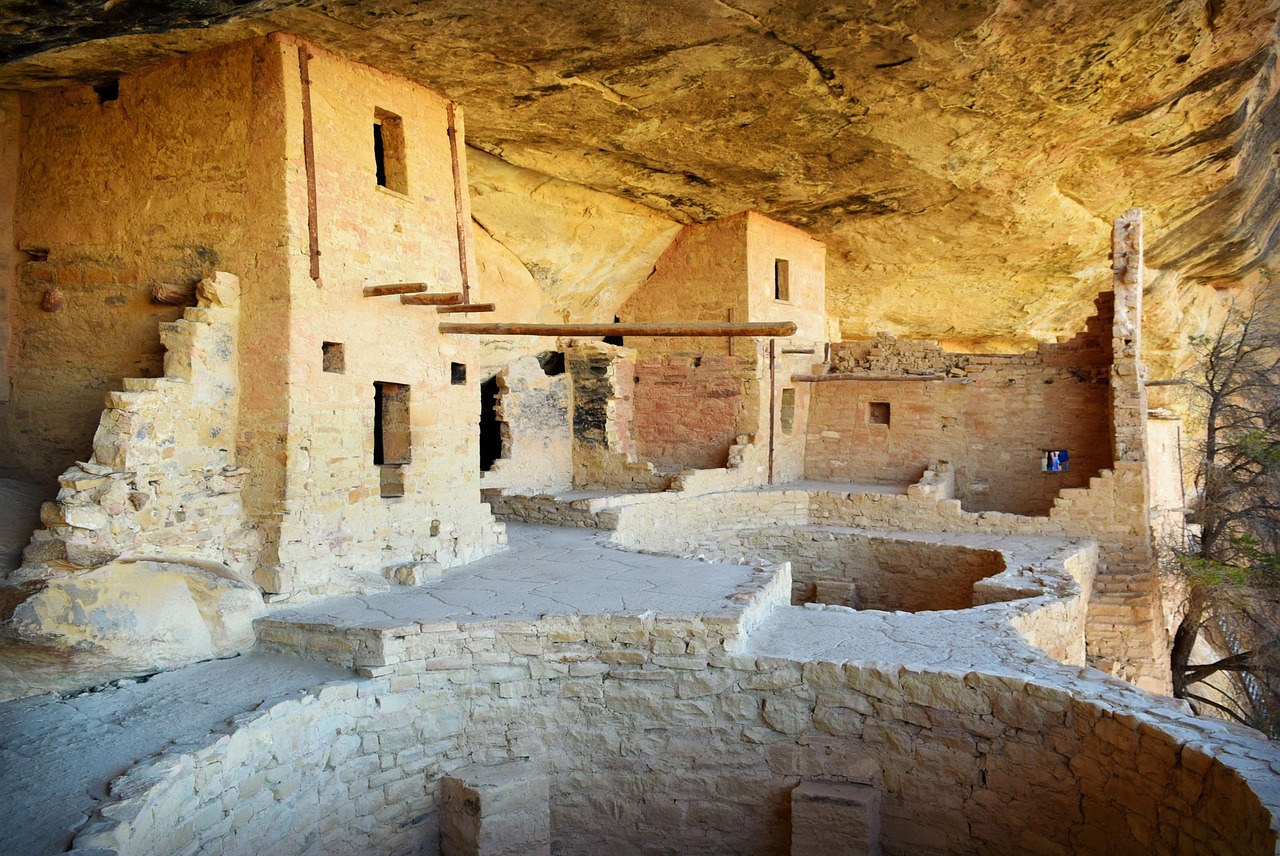
Image by: Bob – Via Pixabay
Geography Information
Mesa Verde’s topography forms an uplifted plateau filled with narrow canyons, steep cliffs, and flat-topped mesas. Altitudes range from 6,000 to 8,500 feet above sea level. The park’s complex geological makeup includes sandstone cliffs, volcanic remnants, and shale valleys.
Vegetation shifts with elevation. Lower levels host pinyon and juniper woodlands. Higher areas include ponderosa pine forests. Canyon bottoms grow willow and cottonwood near water sources. This ecological variety supports wildlife such as mule deer, mountain lions, foxes, and over 200 bird species.
The San Juan Mountains frame the horizon, and the park’s cliffs overlook valleys with winding creeks. Erosion over time has sculpted the alcoves where ancient people built their stone villages. These natural formations remain intact centuries later.

Image by: Russ McCabe – Via Pixabay
Places to Visit
Mesa Verde National Park offers more than just scenic overlooks. It’s a labyrinth of historical structures, informative trails, and viewpoints that stir the imagination.
Cliff Palace
-
The crown jewel of the park.
-
Over 150 rooms and 23 kivas (ceremonial rooms).
-
Believed to have housed more than 100 people.
-
Accessible only via ranger-guided tour.
Balcony House
-
Known for its adventurous access.
-
Visitors must climb a 32-foot ladder and crawl through a narrow tunnel.
-
Offers insight into defensive architecture.
Spruce Tree House
-
Third-largest dwelling in the park.
-
Temporarily closed due to rockfall risks but visible from viewpoints.
-
Close to the Chapin Mesa Archeological Museum.
Long House
-
Second-largest cliff dwelling.
-
Located on Wetherill Mesa.
-
Guided tours only.
Far View Sites Complex
-
Includes mesa-top dwellings and farming outposts.
-
Self-guided walking tour.
-
Shows agricultural evolution and layout planning.
Petroglyph Point Trail
-
A 2.4-mile loop trail with ancient rock carvings.
-
Leads past scenic overlooks and archaeological features.
Chapin Mesa Museum
-
Exhibits artifacts, pottery, tools, and dioramas.
-
Offers deeper context on the culture and construction methods.
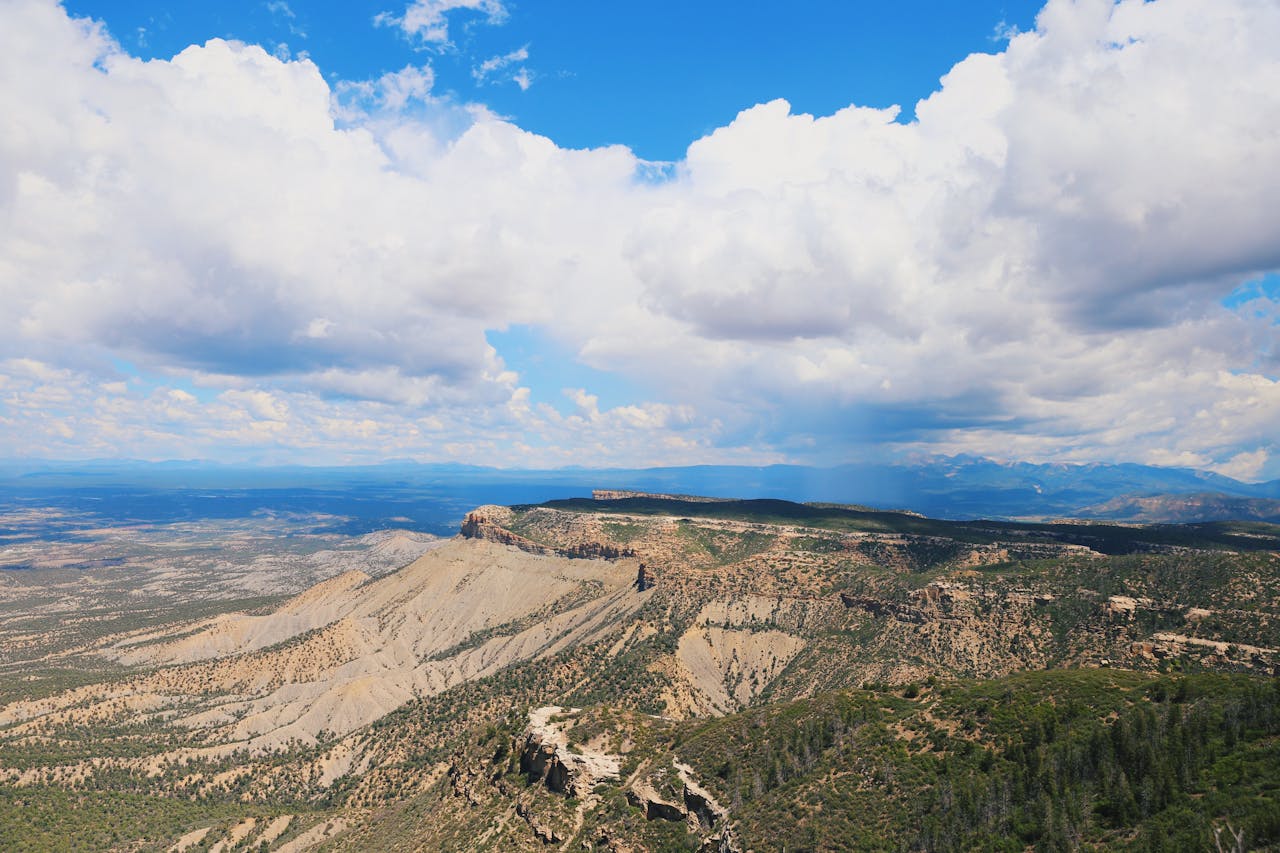
Image by: Daniel Erlandson – Via Pexels
Yearly Climate
Mesa Verde experiences four distinct seasons, each offering a unique park experience.
Spring (March – May)
-
Snow begins to melt, roads reopen.
-
Average temperatures range from 30°F to 65°F.
-
Wildflowers bloom across the mesa.
Summer (June – August)
-
High tourist season.
-
Temperatures reach up to 85°F, dry heat.
-
Thunderstorms in late afternoons.
Fall (September – November)
-
Crisp air and golden foliage.
-
Fewer visitors make it peaceful.
-
Day temps range from 45°F to 70°F.
Winter (December – February)
-
Snowfall closes higher elevation roads.
-
Some cliff dwellings inaccessible.
-
Scenic drives and cross-country skiing available.
Best Time of Year to Visit
The ideal time to explore Mesa Verde National Park is from mid-May through early October. During these months, all dwellings and trails are open, and ranger-led tours are in full swing. The weather stays warm and dry, perfect for hiking and photography.
July and August draw the most visitors, so June and September offer a good balance between access and crowd levels. Spring can be quiet and beautiful, but some areas may remain closed until late May. Winter brings solitude and unique snowy views, though with limited access to historic sites.
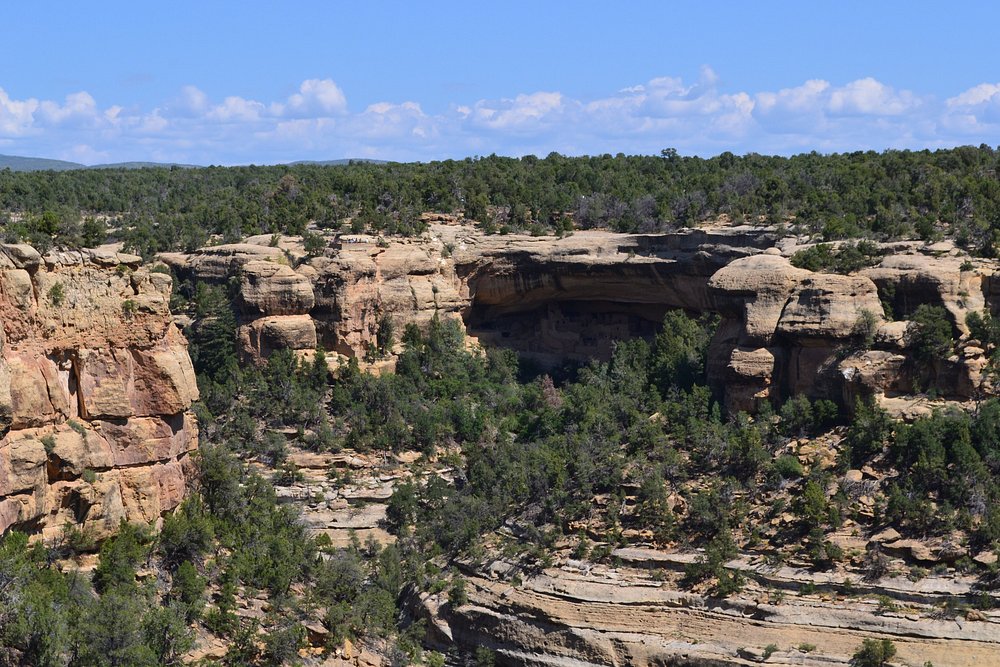
Image by: moodblu – Via Tripadvisor
In Summary…
Mesa Verde National Park offers an extraordinary window into the ancient world. Every sandstone wall and narrow passage tells stories of resilience, adaptation, and cultural sophistication. The blend of archaeological depth, scenic vistas, and natural wonder turns every visit into a journey through time.
Whether walking the silent corridors of Cliff Palace, standing atop the mesa gazing across the Four Corners region, or hiking a trail lined with desert flora, the park invites reflection and awe. It stands not only as a testament to the past but also as a celebration of endurance and ingenuity.

